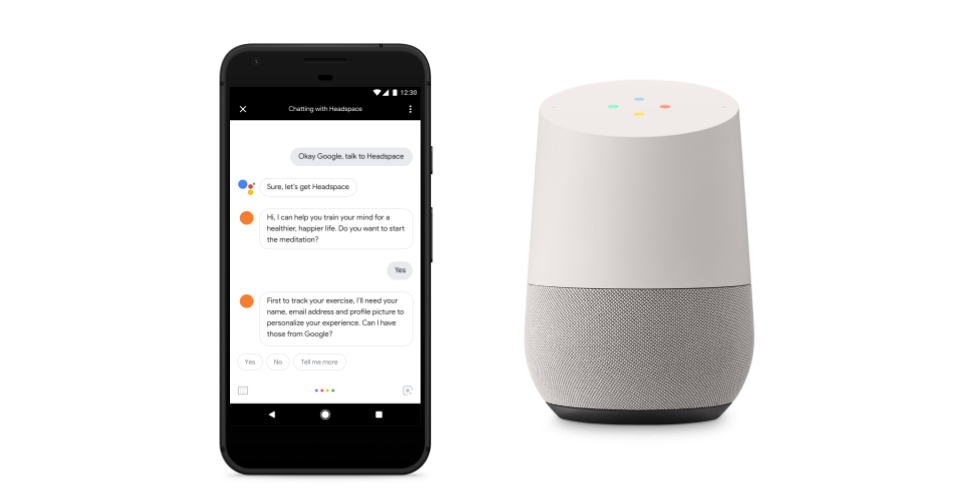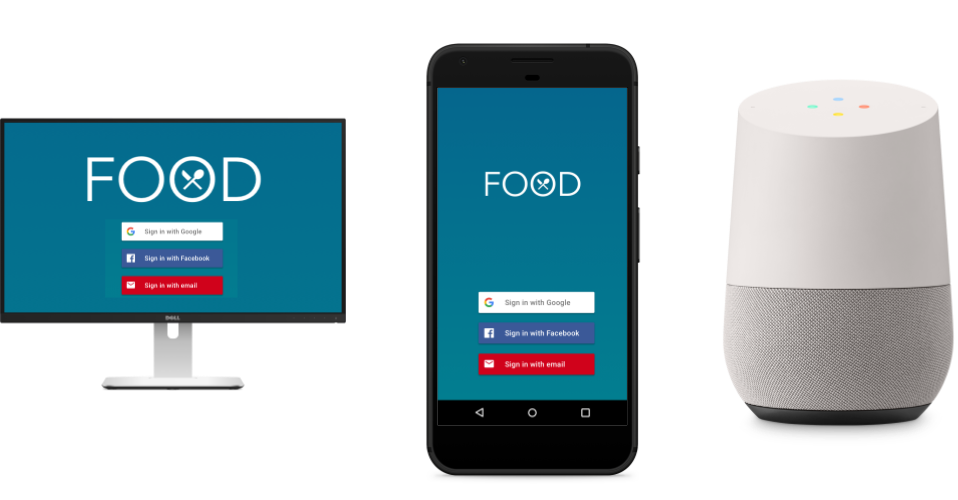您可以使用账号关联功能将用户的 Google 账号与用户在您的身份验证系统中的账号相关联。这样一来,您就可以为用户打造更丰富的体验;例如,您可以保存用户的食品或音乐偏好、交易历史记录以及其他信息,以便提供更个性化的体验。
如果您的 Action 是不同平台(例如 Web 或 Android)上现有应用的配套应用,您可以使用账号关联功能,以安全的方式让用户在所有平台上都能使用自己的偏好设置,从而确保跨平台体验的一致性。
Google 智能应用的账号关联功能使用 Google 登录(Google 的安全身份验证系统)和可选的 OAuth 2.0(行业标准的授权协议)。
了解账号关联流程
当 Google 助理将 Google 账号与用户匹配时,您可以使用账号关联来征求用户对访问相应 Google 账号的许可。您可以使用账号数据执行以下操作:
- 如果用户已在其他平台上使用过您的 Action 或应用,则在您的身份验证系统中查找匹配的账号。
- 在身份验证系统中为新用户创建新账号。
Actions on Google 提供三种不同的账号关联类型。
Google 登录

借助面向 Google 助理的 Google 登录,您的 Action 可以在对话期间请求访问用户的 Google 个人资料,包括用户的姓名、电子邮件地址和个人资料照片。用户可以通过语音完成整个流程,从而获得顺畅的登录体验。
如果符合以下任何条件,建议您使用这种账号关联方式:
- 您没有现有的身份验证系统。
- 您拥有现有的身份验证系统,并且只想关联使用 @gmail.com 地址注册现有应用的用户。
如需了解详情,请参阅 Google 登录概念指南和实现指南。
OAuth 和 Google 登录

OAuth 和 Google 登录关联类型在基于 OAuth 的账号关联之上添加了 Google 登录。这不仅可为 Google 用户提供顺畅的语音关联体验,还可让使用非 Google 身份注册您服务的用户进行账号关联。
如需使用此流程,您需要扩展其中一个受支持的 OAuth 2 标准流程,以添加对 Google 专有协议扩展的支持,从而让您能够:
- 使用 Google 个人资料信息顺畅地关联账号。
- 使用 Google 个人资料信息无缝创建新账号(可选)。
如果您有现有的身份验证系统,并且希望允许用户关联到非 @gmail.com 地址,建议使用这种类型的账号关联。
如需了解详情,请参阅 OAuth 和 Google 登录概念指南和实现指南。
OAuth
OAuth 账号关联类型支持两种业界标准 OAuth 2.0 流程:隐式流程和授权代码流程。
不建议使用此流程,因为它需要将用户互动从语音转移到屏幕。如果您已实现 OAuth 2 服务器,但无法扩展令牌交换端点以添加对 Google 协议的支持,从而通过 ID 令牌实现自动关联和账号创建,则可以考虑使用此流程。
如需了解详情,请参阅 OAuth 概念指南和实现指南。

